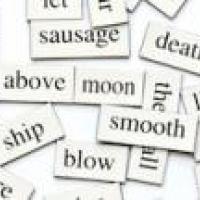
The physics of language
Can physics shed new light on understanding language? We talked to theoretical physicist Sanjaye Ramgoolam, from Queen Mary, University of London, about how his work as a physicist directly inspired the development of an exciting new approach to understanding language – linguistic matrix theory.
The physics of language: writing words as numbers — "You shall know a word by the company it keeps," said John Rupert Firth. And this idea is key to the vast wealth of data arising in natural language processing (NLP).
The physics of language: matrix statistics — When Ramgoolam saw the NLP data, consisting of matrix representations of the words of a language, he recognised something familiar, something from his background as a physicist.
The physics of language: signature of a language — Inspired directly by techniques from particle physics and cosmology, linguistic matrix theory might offer us a way to capture the essence of a language.
The physics of language: the video — Watch this video to find out how Ramgoolam is using this surprising connection between physics, maths and language.